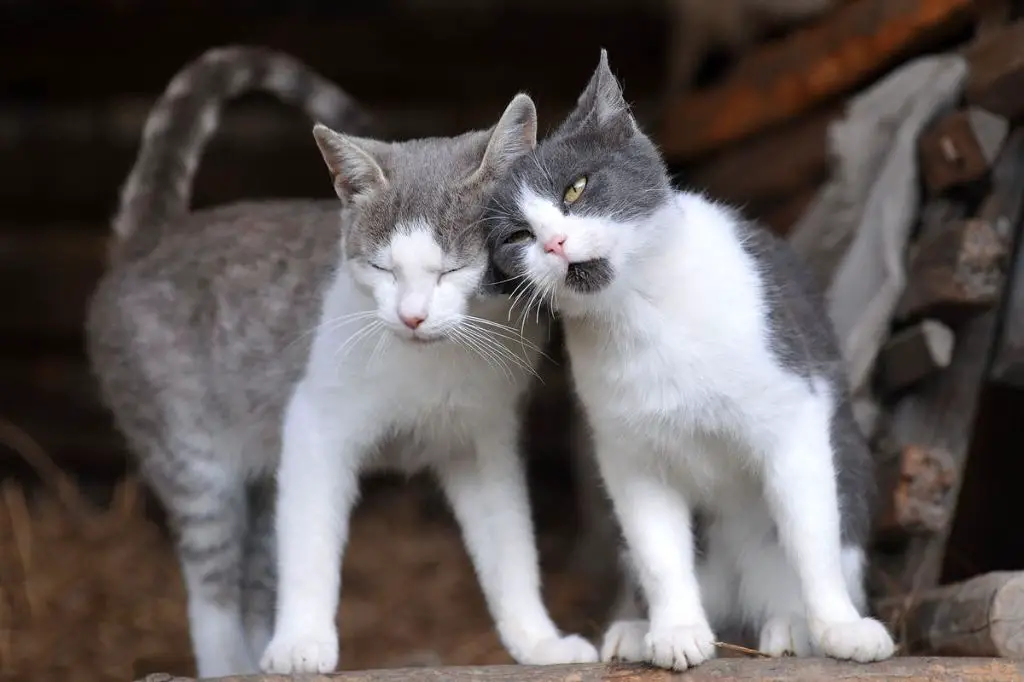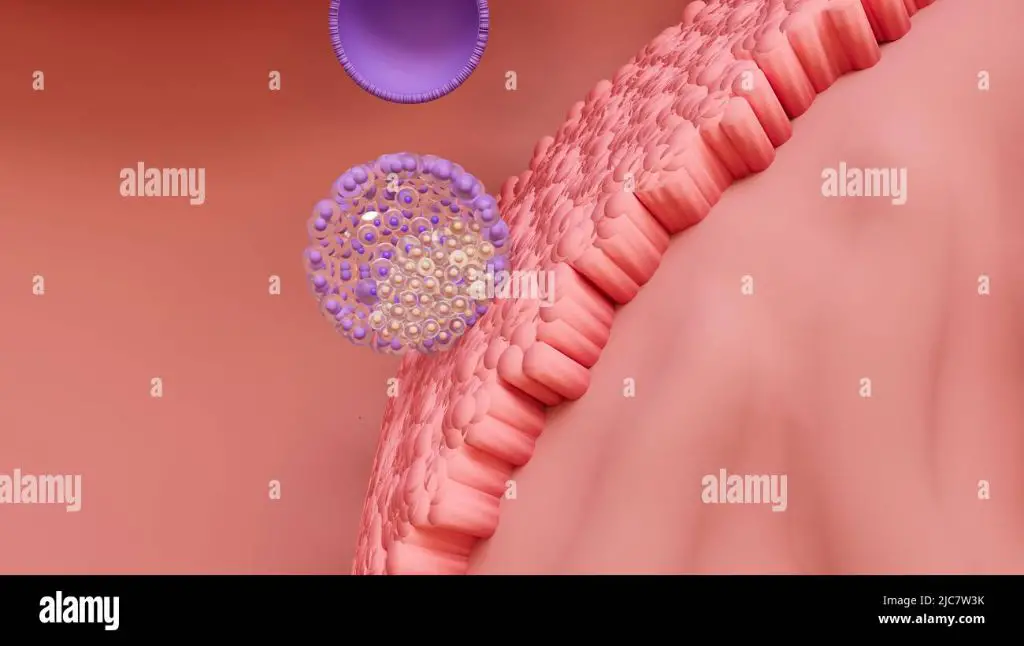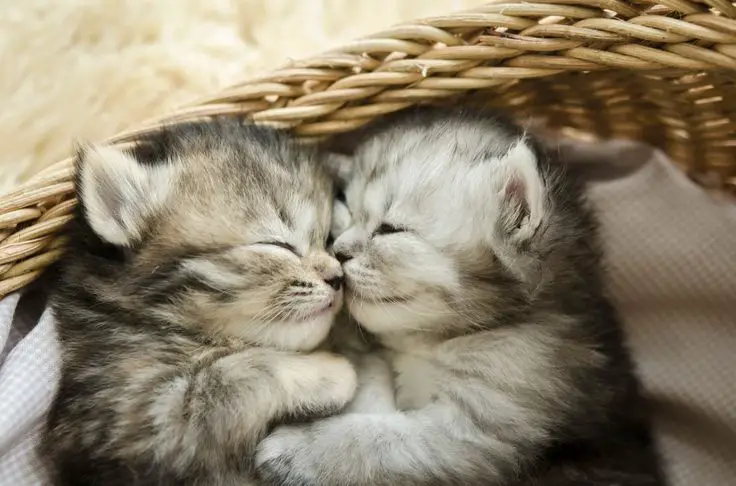A cat is a small, carnivorous mammal of the Felidae family. Cats are characterized by their flexible and compact bodies, heightened senses, night vision and agility, retractable claws and whiskers. While all species of cats have distinct reproductive anatomy, this overview will focus on reproductive physiology and behavior in domestic cats (Felis catus).
Feline reproduction is characterized by strange biological quirks like induced ovulation which means that ovulation only occurs after mating. The typical feline gestation period lasts 58-65 days and culminates in the birth of litters of 1-9 kittens. This content aims to provide a complete overview of the fascinating process by which cats reproduce and create new generations of kittens.
Feline Reproductive Anatomy
Cats have a complex reproductive system that contains several important organs and structures. The key parts involved in reproduction include the ovaries, the uterus, and the vagina (Bohrer, 2016).
The ovaries are two small organs located near the kidneys. They produce eggs and hormones like estrogen and progesterone which control the reproductive cycle. The cat’s uterus is Y-shaped with two uterine horns that connect to the cervix and vagina. The main functions of the uterus are to receive sperm during mating, provide a place for embryos to develop, and ultimately expel kittens during labor (Catbandit, 2022).
The vagina connects the uterus to the outside of the body. It serves as the passageway for sperm to enter and provides the birth canal during labor and delivery. Together, these organs allow female cats to ovulate, conceive, and give birth to kittens.
The Estrous Cycle
The feline estrous cycle occurs in phases, each controlled by different reproductive hormones. The phases are anestrus, proestrus, estrus, and diestrus. Anestrus is a resting phase where the reproductive organs are inactive. Proestrus is when follicles in the ovaries start maturing and estrogen levels rise, leading to behavioral and physical changes in the female. Estrus is when the female cat is receptive to mating. Estrogen levels peak and decline during this phase as progesterone levels begin to rise. Diestrus occurs after mating, progesterone levels remain elevated and the uterine lining proliferates in preparation for pregnancy. If fertilization does not occur, progesterone levels drop and the cycle begins again with anestrus. The average length of the feline estrous cycle is 2-3 weeks.
Mating
Feline mating behaviors often involve various courtship rituals, vocalizations, and physical displays. The male cat will approach the female in estrus and begin sniffing and licking her. He may rub his cheeks against hers, bite the scruff of her neck, and tread on her hindquarters with his front paws. The female may roll over, purr, or assume a mating stance to indicate receptiveness. Eventually the male will mount and intromit his penis. The mating process is often noisy with both cats yowling loudly. Afterwards, the male will usually lick his penis and the female’s genital area before wandering off. The entire mating process may be repeated multiple times over the course of several days while the female is in estrus.

During mating, the male cat’s barbed penis stimulates ovulation in the female. Ovulation occurs as the penis penetrates the vagina, prompting the release of eggs from the ovaries. Fertilization happens when the male ejaculates and sperm travel up the female’s reproductive tract to meet the eggs. Conception occurs if one sperm successfully penetrates and fertilizes an egg. The fertilized egg then begins dividing and developing into an embryo that will implant in the uterus several days later.
“Why Do Cats Fight When Mating? Understanding Feline Mating Behaviors.” CatBandit, 14 July 2022, blog.catbandit.com/why-do-cats-fight-when-mating-understanding-feline-mating-behaviors/.
Fertilization
Fertilization occurs when a male cat’s sperm unites with a female cat’s egg. This typically happens within the oviducts after mating has taken place. Once the sperm penetrates the egg, it forms a zygote which then begins rapidly dividing into multiple cells as it travels down the oviduct towards the uterus. This early embryo development is crucial for forming the placenta and amniotic sac that will nourish the developing kittens as well as the kittens themselves. Within about 4-6 days after fertilization, the embryos will implant into the wall of the uterus to continue gestation (Breeding and Reproduction of Cats – Cat Owners).
Implantation
Implantation occurs around 13-17 days after mating in cats. At this stage, the embryos have developed into blastocysts, which are fluid-filled balls of cells. The blastocysts emerge from the zona pellucida, a protective coating, and attach to the uterine lining. This process is triggered by estrogen secretion from the blastocysts. The blastocysts implant mainly in the uterine horns. They bury into the uterine lining and establish connections with the mother’s blood supply. This allows the embryos to receive nutrients and oxygen for further development. Implantation marks the transition from the free-living to placental stages of embryonic development.

According to a Cornell Feline Health Center study, understanding feline embryo implantation can help improve success of artificial reproductive techniques in cats.
Gestation
The gestation period in cats is typically 60-67 days which is a relatively quick timeline compared to other mammals. Gestation kicks off once the sperm fertilizes the egg and lasts until birth. Here’s how the stages of feline fetal development progress during that time:
Week 1 – Fertilized eggs travel to the uterus for implantation.
Week 2 – Implantation occurs when embryos attach to the uterine wall. The embryos are about 2mm in size.
Week 3 – The embryos start developing distinct body parts like eyes and limbs. Their heart also starts beating. They reach 12mm in length.
Week 4 – The kitten’s claws, teeth and whiskers start forming. Their skeleton ossifies and sex organs differentiate. They are 45mm long.
Week 5 – Fur begins growing on the skin. The eyes open and ear canals form. Kittens are now 85mm long.
Week 6 – Kittens gain coordinated movement. Their eyesight improves and claws harden. Kittens are about 114mm long.
Week 7 – Kittens get final growth and development in preparation for birth. They are about 150mm long.
Weeks 8-9 – Kittens are viable and ready to be born. They continue to gain weight until birth. Full gestation length ranges from 60-67 days.
Overall the feline fetal development timeline mirrors that of human pregnancy on an accelerated schedule. Monitoring the cat’s progress week-by-week helps determine if the pregnancy is advancing normally.
Labor and Birth
Labor and delivery in cats occurs in three stages, similar to humans. The early first stage of labor involves the cervix dilating and contractions beginning. This stage can last 6-12 hours as the cat’s body prepares to deliver the kittens. Signs during this stage include restlessness, reduced appetite, and the cat seeking seclusion. The cat may also purr during contractions. Once contractions are about 2-3 minutes apart and stronger, the cat has entered the second stage of labor.
During the second stage, the cat begins actively pushing out kittens. Contractions become very strong, about 1-2 minutes apart. The amniotic sac containing the kitten will become visible at the vulva. Usually the mother breaks this sac open, but you can assist by gently puncturing the membrane if needed. One kitten will be delivered at a time. The mother will bite off the umbilical cord and often eat the placenta. The kitten should begin breathing and meowing within a few minutes. Most cats handle birthing on their own, but you should be prepared to intervene if a kitten becomes stuck in the birthing canal. The mother will lick the newborn kitten to stimulate breathing and blood circulation.

After each kitten is delivered, the queen will take a short rest period of up to an hour before resuming labor. The second stage is complete once all kittens have been birthed. Finally, the third stage involves the expulsion of the placenta and fluid. The queen may eat these tissues. The entire birthing process can take 2-12 hours. If you notice signs of prolonged straining, contractions stopping, or green/brown discharge, seek veterinary assistance immediately. With preparation and support, your cat should have a smooth labor and delivery.
Newborn Kittens
Newborn kittens are completely dependent on their mother for survival. They are born with closed eyes and folded ears, and weigh just 100-120 grams on average. Within their first few weeks of life, kittens go through tremendous growth and development.
In terms of appearance, newborn kittens have soft, short fur and are unable to regulate their own body temperature. Their eyes begin opening around 7-14 days old. Their eyes are blue at birth but will change color as they mature. Their ears also start to unfold within the first couple weeks.
Newborn kittens spend about 90% of their time sleeping and eating. They nurse frequently from their mother, stimulating milk production. Kittens should gain around 10 grams per day in the first few weeks. Around 3-4 weeks old, kittens will begin the weaning process as they start eating solid food.
Proper care for newborn kittens involves making sure they stay warm, feeding colostrum shortly after birth, monitoring weight gain, and stimulating urination/defecation. The mother cat cleans and stimulates kittens. Kittens should be kept in a safe, warm nesting area away from other pets initially. Source

Conclusion
In summary, feline reproduction and gestation are complex processes that require the proper functioning of the female cat’s reproductive anatomy and hormonal cycles. Cats are induced ovulators, meaning ovulation occurs after mating. During the estrous cycle, elevated estrogen levels trigger behavioral changes that attract tomcats. After mating, ovulation occurs and the eggs travel to the uterus for potential fertilization. If fertilization occurs, the embryos implant in the uterine lining about 12-14 days after mating. Gestation lasts 63-65 days on average. In the final week of pregnancy, levels of progesterone drop while estrogen and prolactin rise to induce labor. Contractions push the kittens through the birth canal. Newborn kittens are born with closed eyes and ears and require extensive maternal care for survival. While the processes are intricate, healthy cats are well equipped for mating, gestation and delivery if provided proper nutrition and veterinary care.

